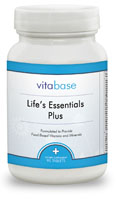| |
Sources of vitamin K |
|
| Many forms of vitamin K are available (synthetic and natural). It is found in multivitamin formulas and in 5-mg tablet form.
Water-soluble chlorophyll is most common and available without a prescription. The natural forms of vitamin K that are found in many foods, particularly in vegetables such as collard greens, spinach, broccoli, asparagus, brussels sprouts and salad greens, are a different form – they are called phylloquinone or menaquinone. Certain bacteria in the intestinal tract also produce menaquinones. Good sources of vitamin K are the dark, leafy, green vegetables including spinach and broccoli high amounts are also found in olive, canola and soybean oils cabbage, carrots, avocados, cucumbers, and tomatoes all have a significant amount of vitamin K in them dairy products such as yogurt are reasonable sources, and meats and cereals also contain some vitamin K. Leafy green vegetables, such as spinach, kale, collards, and broccoli, are the best sources of vitamin K. The greener the plant, the higher the vitamin K content. Spinach, lettuce, broccoli, brussels sprouts, and cabbage are good sources of vitamin K, containing about 8 mg vitamin K/kg food. Cow milk is also a good source of the vitamin. Soybean oil, canola oil, and olive oil are good sources of the vitamin, while corn oil and peanut oil are very poor sources. In animal-source foods, K is found in liver, milk, yogurt, egg yolks, and fish liver oils. The best source for humans is that made by the intestinal bacteria. |
|
|
|
|
 Life Essentials Plus offers a broad spectrum of vitamins, minerals, antioxidants and other natural ingredients in one complete formula. This combination allows the micronutrients to work together synergistically improving absorption and assimilation. This formula contains natural and herbal supplements not found in most multivitamin formulas. These supplements work with a variety of bodily functions to support total health. If you are seeking a complete nutritional supplement to support good, overall health, look no further than Vitabase's Life Essentials.
Life Essentials Plus offers a broad spectrum of vitamins, minerals, antioxidants and other natural ingredients in one complete formula. This combination allows the micronutrients to work together synergistically improving absorption and assimilation. This formula contains natural and herbal supplements not found in most multivitamin formulas. These supplements work with a variety of bodily functions to support total health. If you are seeking a complete nutritional supplement to support good, overall health, look no further than Vitabase's Life Essentials.